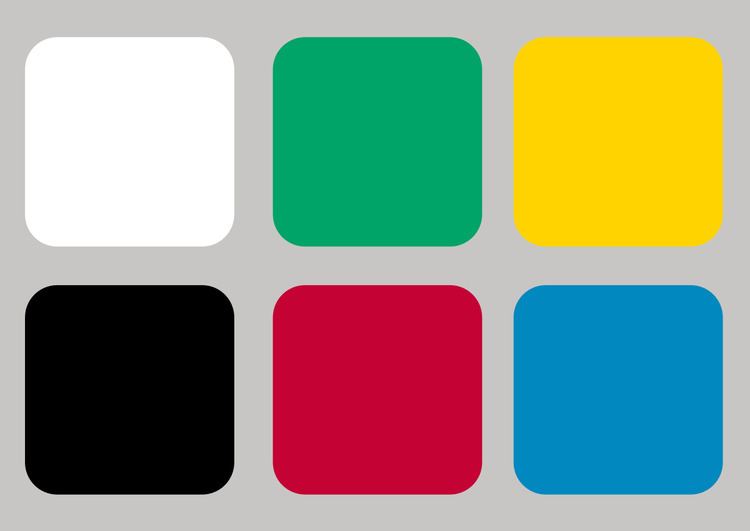 | ||
The color opponent process is a color theory that states that the human visual system interprets information about color by processing signals from cones and rods in an antagonistic manner. The three types of cones (L for long, M for medium and S for short) have some overlap in the wavelengths of light to which they respond, so it is more efficient for the visual system to record differences between the responses of cones, rather than each type of cone's individual response. The opponent color theory suggests that there are three opponent channels: red versus green, blue versus yellow, and black versus white (the last type is achromatic and detects light-dark variation, or luminance). Responses to one color of an opponent channel are antagonistic to those to the other color. That is, opposite opponent colors are never perceived together – there is no "greenish red" or "yellowish blue".
Contents
While the trichromatic theory defines the way the retina of the eye allows the visual system to detect color with three types of cones, the opponent process theory accounts for mechanisms that receive and process information from cones. Though the trichromatic and opponent processes theories were initially thought to be at odds, it later came to be understood that the mechanisms responsible for the opponent process receive signals from the three types of cones and process them at a more complex level.
Besides the cones, which detect light entering the eye, the biological basis of the opponent theory involves two other types of cells: bipolar cells, and ganglion cells. Information from the cones is passed to the bipolar cells in the retina, which may be the cells in the opponent process that transform the information from cones. The information is then passed to ganglion cells, of which there are two major classes: magnocellular, or large-cell layers, and parvocellular, or small-cell layers. Parvocellular cells, or P cells, handle the majority of information about color, and fall into two groups: one that processes information about differences between firing of L and M cones, and one that processes differences between S cones and a combined signal from both L and M cones. The first subtype of cells are responsible for processing red–green differences, and the second process blue–yellow differences. P cells also transmit information about intensity of light (how much of it there is) due to their receptive fields.
History
Johann Wolfgang von Goethe first studied the physiological effect of opposed colors in his Theory of Colours in 1810. Goethe arranged his color wheel symmetrically, "for the colours diametrically opposed to each other in this diagram are those which reciprocally evoke each other in the eye. Thus, yellow demands purple; orange, blue; red, green; and vice versa: thus again all intermediate gradations reciprocally evoke each other."
Ewald Hering proposed opponent color theory in 1892. He thought that the colors red, yellow, green, and blue are special in that any other color can be described as a mix of them, and that they exist in opposite pairs. That is, either red or green is perceived and never greenish-red; although yellow is a mixture of red and green in the RGB color theory, the eye does not perceive it as such.
In 1957, Leo Hurvich and Dorothea Jameson provided quantitative data for Hering's color opponency theory. Their method was called "hue cancellation". Hue cancellation experiments start with a color (e.g. yellow) and attempt to determine how much of the opponent color (e.g. blue) of one of the starting color's components must be added to eliminate any hint of that component from the starting color (Wolfe, Kluender, & Levi, 2009).
Griggs expanded the concept to reflect a wide range of opponent processes for biological systems in this book Biological Relativity (c) 1967.
In 1970, Richard Solomon expanded Hurvich's general neurological opponent process model to explain emotion, drug addiction, and work motivation. (See Opponent-process theory.)
The opponent color theory can be applied to computer vision and implemented as the "Gaussian color model" and the "natural-vision-processing model".
Complementary-color afterimages
If someone stares at a red square for forty seconds, and then immediately looks at a white sheet of paper, they often perceive a cyan square on the blank sheet. This complementary color afterimage is more easily explained by the trichromatic color theory than the traditional RYB color theory; in the opponent-process theory, fatigue of pathways promoting red produce the illusion of a cyan square.
